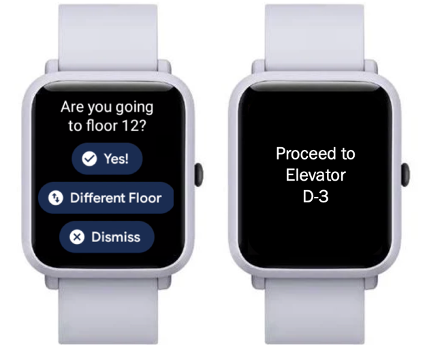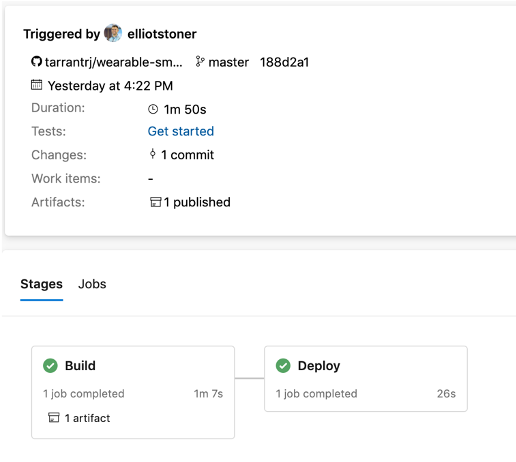Blog March 25, 2020
Improving the “Smart” in Smart Elevators by moving the UI to a Watch App










- Authors
- Shri Kalebere, Stefan Menger, Madelyn Luansing, Penny Long, Elliot Stoner, Eric Galante, Edward Hertzog, Douglas Abramowicz, Ryan Tarrant
- Topics
- Mobile Innovation

Imagine walking up to a bank of elevators and getting a notification on your watch predicting your desired floor. Then another notification informs you of which elevator to use. Sounds pretty cool right? If you work in a high-rise and require large elevator banks to reach your desk daily, this cool factor expands exponentially.
CapTech’s latest Innovation Challenge focused on “Awareable Technology” or technology that can be used on wearable devices that can enable greater efficiency, productivity, or safety due to a greater awareness of the world around a user. Because our [city] team is familiar with the daily slow-downs associated with elevators, our focus quickly moved from idea to agreed-upon challenge ready to be solved.
Smart elevators do exist today, but a watch app would take these to the next level. In most smart elevators, instead of pushing an arrow button to go up or down, you call the elevator by selecting your desired floor on a touch screen before entering the elevator. However, during high-traffic hours, even smart elevators cannot prevent crowded rides or elevator inefficiencies.

Value Added with a Watch App
By moving the interface from the wall to a watch, we were able to reduce wait time when selecting the floor, provide a personalized experience, optimize elevator selection, and more accurately predict capacity. We also established a floor predictor using simple profile information and calendar events. Similar to Lyft Share Saver or Uber Share, we intentionally delayed assigning the elevator to optimize selection.
Accelerating Application Delivery in Short Projects
Clearly defining and challenging our definition of MVP (minimal viable product), as well as breaking down our work into small components and implementing a CI/CD pipeline in the early stages of our project, empowered our team to quickly accelerate our application delivery.
MVP
Initially MVP was difficult to define as most people gravitated to their knowledge base and complicated solutions rather than the Innovation Challenge problem statement and what was needed to achieve the collaborative innovation goal. After an initial team brainstorm, a passionate subset of the team came together on a whiteboard to focus our efforts.
Small components
By drawing out MVP, we were able to break our work down into small components that team members could take ownership of. We initially stubbed out the architecture in Azure Functions as a base building block, empowering our team to expand and iterate over through completion.

Establishing CI/CD Pipeline
Using a “hello world” style stubbed function, we were able to establish a simple automated CI/CD (Continuous Integration and Continuous Deployment) pipeline using Azure DevOps early in the project. Developers only needed to focus on writing their functions. With every PR (pull-request) to the code repository, their changes would automatically trigger a build and, if successful, then trigger a deployment. This ensured merging clean code and consistent deployments to speed up development.
Key Takeaways
Wearable Technology is more than just notifications. Similar to the powerful shift witnessed with mobile applications, moving an interface to the individual user can unlock improved capabilities for the user and the application.
Upfront work, even in small projects, can go a long way to ensuring team success. Underestimating the importance of upfront collaboration and removing team obstacles can lead to a team’s inability to deliver. And when it came to this project, centered on maximizing wearable technology, our success could lead to greater benefits for everyone.

